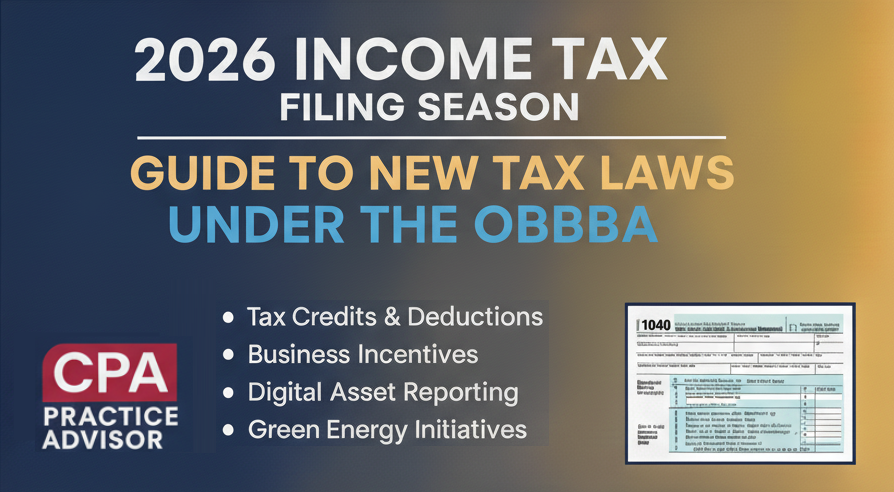In early February, a friend of mine who owns her own bakery business posted on Facebook about taking the day off to “start getting her tax documents ready for her tax preparer”. As I read her post, I thought to myself, “If she’s waited until early February to just get started, then she may already be late!” A lot of filing preparation has to be done before the tax year closes in December.
Preparing to file taxes can sometimes be a year-round job, even for small businesses. It may involve different responsibilities, including estimating tax payments, planning to buy or lease capital equipment, developing retirement-saving strategies, etc. Because of this, correct timing is crucial – waiting until the last minute can be troublesome. Based on my experience, here are some tips to help get your tax-filing plan started today.
Establish a good accounting system
Successful filing preparation starts with implementing an efficient accounting system. First, business owners need to choose a bookkeeping program. There’s a variety of options – it can be something as simple as Microsoft Excel or more in-depth software. At Milligan & Company, I use an Excel template to help single-member LLCs or sole proprietors gather information needed for Schedule C and home-office expenses. Whatever works best for your business is fine, as long as you have some form of bookkeeping technology in place. However, whether you choose Excel or QuickBooks, the information is only as good as its input. So, businesses should also hire an accountant, or at a minimum, a good bookkeeper. Having someone on staff who is familiar with accounting terminology and principles makes the tax preparer’s job a little easier.
Monitor all of your transactions on a regular basis
After an accounting system is set in place, businesses should start diligently monitoring transactions for income and expenses throughout the year. A good check and balance on this is running monthly bank reconciliations. If the accounts are reconciled, business owners will know that all transactions have been accounted for, or can research any missing transactions before the year is out. Any questions about categorizing certain transactions that appear should be noted and discussed with the tax preparer. Having your tax preparer do a quarterly review of the business financial statements is another good way to ensure your books are accurate. That way, they can pick up on any significant transactions that appear to be improperly categorized, or that seem unusual. Receipts and supporting documentation for all transactions should be filed in an orderly manner during the year.
Review your financial statements quarterly to estimate taxes to be paid
To eliminate surprises at tax preparation time, businesses should review quarterly numbers with their preparers, which also enables them to make accurate, quarterly estimated tax payments. By evaluating quarterly anticipated annual profit numbers, businesses will know with greater accuracy what their federal, state and local (if applicable) tax liabilities will be, and hopefully eliminate any late-payment penalties that would otherwise be assessed by the IRS. Doing this kind of planning before year-end also gives business owners time to make other business decisions before the New Year, such as purchasing needed capital assets, paying out employee bonuses, or contributing to an owner’s retirement plan. These are much better planning ideas than paying it to the government in taxes!
For partnerships and S-corporations, the business’ net income or loss will flow to its owner’s personal tax returns, so planning from a personal tax aspect needs to be considered as well, and reviewed quarterly, at minimum. This is particularly important in light of the additional Medicare tax, net investment income tax and alternative minimum tax (AMT). These items can be a significant increase to the tax liability, so not planning for them would be a mistake.
Ensure Your Business Complies with All Tax Filings
In addition to income tax planning, companies need to make sure they’re compliant with all tax filings, specifically payroll tax filings. Make sure all Forms 940 and 941s have been filed and W-2 statements issued. Forms 1099 and 1096 should also be completed and sent to the IRS for any independent contractors who were paid $600 or more during the year.
When it’s time to file taxes, businesses can provide the Excel template or financial statements (including its balance sheet, profit & loss and cash flow statements) to their preparers. Other items may be requested, such as a fixed asset schedule or a schedule of owners’ contributions and withdrawals. Or the preparer may want to take a deeper dive into some of the numbers, or obtain explanations for balances that have changed significantly compared to the prior year.
If everything discussed above has been done, businesses will be in great shape to get their taxes done timely and efficiently – ultimately resulting in reduced tax preparation fees, and if there is money owed back from the IRS, quicker delivery of their tax return!
———–
LaVon Chancy is Director of Tax Services for Milligan & Company, LLC, a full service accounting, auditing, tax, consulting and management advisory firm, and one of the largest minority-owned CPA firms in the U.S. With nearly 20 years of experience, she leads the tax team and is responsible for managing and supervising the timely preparation of federal, state and local tax returns for the firm’s corporate, not-for-profit and individual clients. For more information about Milligan & Company, visit www.milligancpa.com.
Thanks for reading CPA Practice Advisor!
Subscribe Already registered? Log In
Need more information? Read the FAQs
Tags: Income Taxes, IRS, Software, Taxes



![natural_disasters_list_1_.56117a5e5df03[1]](https://www.cpapracticeadvisor.com/wp-content/uploads/2021/12/natural_disasters_list_1_.56117a5e5df03_1_.61c1db14bf0ea.png)